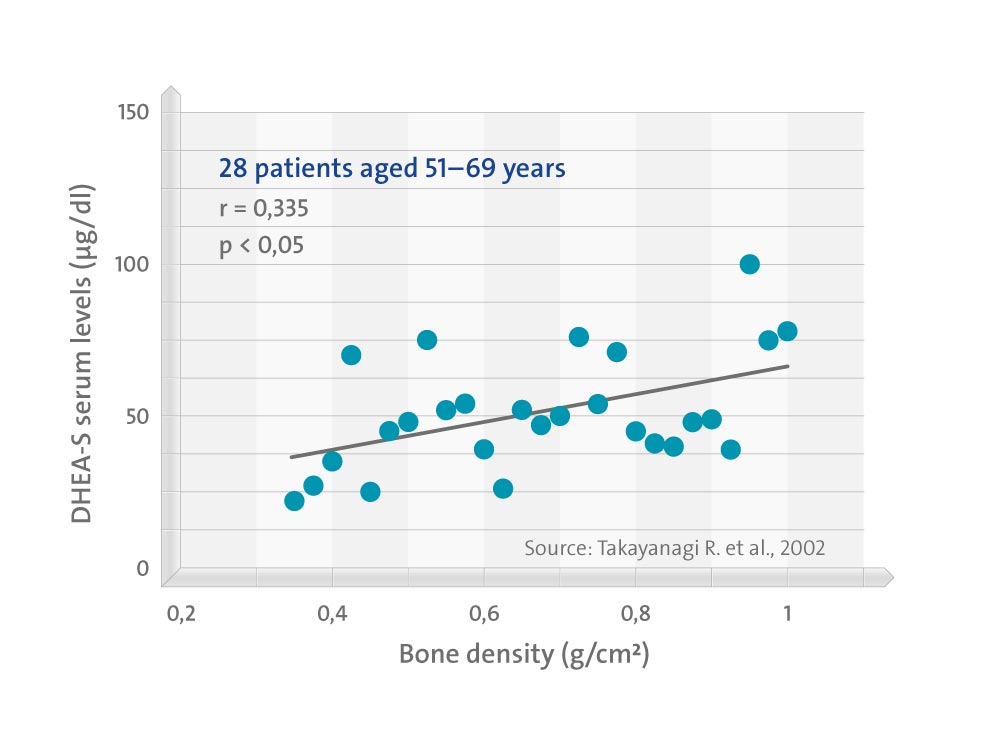A significant positive correlation between bone mineral density (BMD) and serum dehydroepiandrosterone sulfate (DHEA-S) was found in 120 postmenopausal women (51-99 years old) but no correlation was seen between BMD and serum estradiol.
In subset analysis, strong positive correlation of serum DHEA-S and estrone with BMD was observed in postmenopausal women aged less than 69 years old. To study a possible role of DHEA-S in preventing osteoporosis, we characterized aromatase activity converting androgens to estrogens in human osteoblasts, because postmenopausal women maintain considerable levels of adrenal androgens. Glucocorticoids at 10(-9) to 10(-7) M induced transiently the expression of and the enzymatic activity of aromatase cytochrome P450 (P450AROM) in primary cultured osteoblasts. 1,25-Dihydroxyvitamin D3 (1,25-(OH)(2)D(3)) alone did not induce the aromatase activity, but enhanced and maintained the glucocorticoid-induced P450AROM gene expression.
Analysis of the activity of P450AROM gene 1b (I.4) promoter, which is used dominantly in human osteoblasts, indicated that the region from -888 bp to -500 bp, which does not contain a typical vitamin D responsive element, is responsible for the enhancing effect of 1,25-(OH)(2)D(3).
These results may suggest that adrenal androgen, DHEA, is converted to estrone in osteoblast by P450AROM, which is positively regulated by glucocorticoid and 1,25-(OH)(2)D(3), and is important in maintaining BMD in the sixth to the seventh decade, after menopause.
